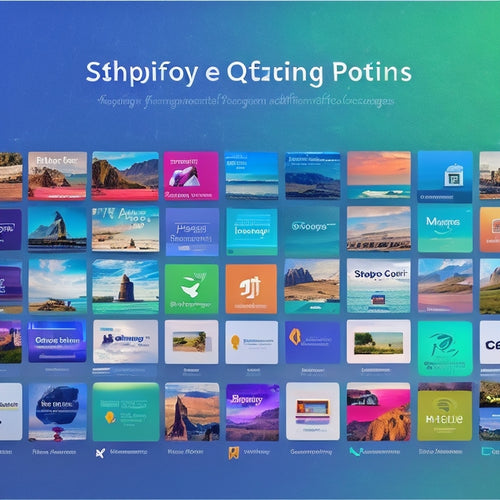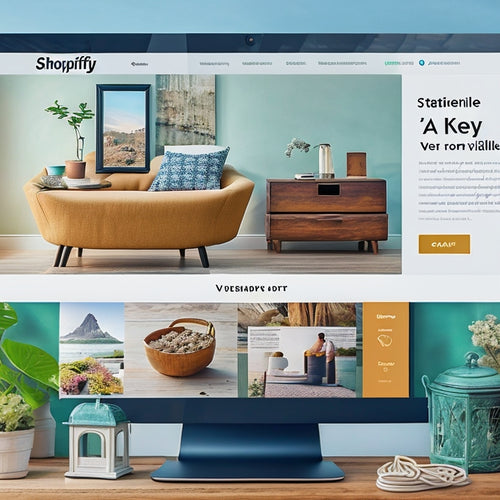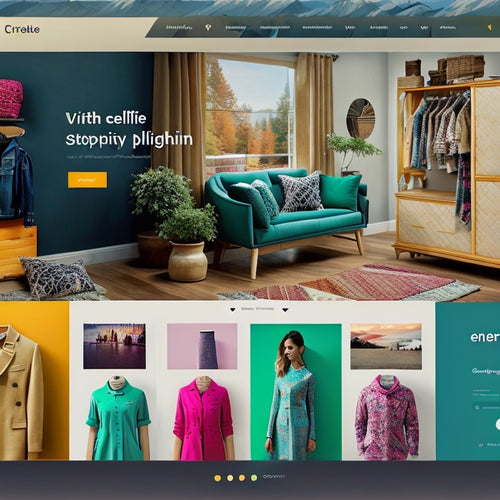
Mastering Online Art Sales: Trends & Strategies
Share
You're ready to turn your artistic talent into a lucrative online business. To succeed, you need to build a digital art empire by defining your distinctive style, identifying your target audience, and creating a unique brand. Access your NFT and commission potential by offering personalized commissions and marketing them effectively. Diversify your income streams by selling physical products and merchandise. Develop effective marketing and pricing strategies by targeting demographics, collaborating with other artists, and researching competitors' prices. By implementing these strategies, you'll be well on your way to expanding your reach and earning potential - and there's even more to explore.
Key Takeaways
• Establish a strong online presence by defining a distinctive artistic style and creating a unique brand that resonates with target audiences.
• Leverage NFTs and commissions to attract collectors and enthusiasts, and provide personalized experiences to drive sales and loyalty.
• Diversify revenue streams by offering physical products and merchandise through on-demand platforms and print-on-demand services.
• Implement effective marketing strategies by targeting demographics, collaborating with other artists, and utilizing social media platforms to reach a wider audience.
• Optimize pricing strategies by researching competitors, calculating creation time and costs, and staying up-to-date with market trends to maximize earnings potential.
Building a Digital Art Empire
As you start on building a digital art empire, it's essential to begin by defining your distinctive artistic style and identifying your target audience, laying the foundation for a successful online presence.
This will help you create a unique brand that resonates with your audience and sets you apart from others. Effective branding techniques, such as consistent visual elements and tone, will help you establish a strong online presence.
You'll want to make sure your online platforms, including social media and your website, accurately reflect your brand and artistic style. By doing so, you'll build trust and credibility with your audience, making it easier to sell your digital art and grow your empire.
Unlocking NFT and Commission Potential
With your brand established and online presence solidified, you're now poised to access new revenue streams by offering commissions and NFTs. This allows you to tap into the growing demand for unique digital art.
By offering personalized commissions, you can cater to clients seeking bespoke pieces that reflect their individuality. This can lead to higher-paying projects and a loyal client base.
Meanwhile, NFTs present a lucrative opportunity for digital art investment. By creating unique, verifiable, and tradable digital assets, you can attract collectors and enthusiasts willing to pay premium prices.
Consider platforms like OpenSea or Rarible to showcase your NFT art, and be prepared to invest time and effort in marketing and promoting your digital masterpieces.
Physical Products and Merchandise
You can now monetize your digital art by transforming it into tangible products that appeal to a wider audience, from casual fans to serious collectors. This approach allows you to tap into the vast market of physical product enthusiasts, increasing your earning potential and brand visibility.
-
Utilize on-demand platforms to produce and distribute custom products, ensuring minimal upfront costs and reduced risk.
-
Offer a diverse range of products, such as apparel, home decor, and accessories, to cater to different tastes and preferences.
-
Leverage print-on-demand services to create unique, high-quality products that showcase your art.
- Expand your product line to include niche items, like phone cases or stickers, to attract a broader customer base and increase revenue streams.
Effective Marketing and Pricing Strategies
Developing a well-thought-out marketing strategy and pricing plan is essential to showcasing your digital art effectively and maximizing its earning potential. To target the right audience, identify your ideal demographics, such as age, interests, and buying habits. This will help you create content that resonates with them.
| Marketing Strategy | Pricing Consideration |
| Targeting demographics | Research competitors' prices |
| Collaborate with other artists | Calculate creation time and costs |
| Utilize social media platforms | Adjust prices based on demand |
Expanding Reach and Earning Potential
By leveraging online platforms and strategic partnerships, artists can greatly expand their reach and earning potential, thereby gaining more visibility and financial success. You can tap into the global market, reaching potential buyers from all over the world.
Here are some ways to expand your reach and earning potential:
- Offer digital products, such as print-on-demand merchandise, to generate passive income.
- Partner with influencers or other artists to reach new audiences.
- Utilize social media platforms to showcase your work and engage with potential buyers.
- Create online courses or tutorials to share your skills and monetize your expertise.
Frequently Asked Questions
Can I Sell Digital Art if I'm Not a Professional Artist?
Yes, you can sell digital art even if you're not a professional artist. As a hobbyist, you can monetize your personal creations online, sharing your unique style with others who appreciate your art.
How Do I Protect My Art From Online Theft and Piracy?
"Can you really afford to let your art be stolen online? Protect your creations by understanding copyright protection, watermarking, and legal recourse for digital rights - safeguarding your online art from theft and piracy."
Can I Sell My Art on Social Media Platforms Like Instagram?
You can sell your art on social media platforms like Instagram by leveraging marketing tactics like hashtags and collaborations, while implementing engagement strategies like giveaways and Q&A sessions to build a loyal audience and strong branding.
Do I Need to Pay Taxes on My Online Art Sales?
You'll need to account for tax implications and legal requirements for online art sales, ensuring you comply with regulations and report income accurately to avoid penalties, so research and understand your tax obligations as a digital artist.
Can I Sell Digital Art That's Inspired by or Based on Copyrighted Material?
You're traversing a minefield, but don't worry, you can create inspired art safely. When selling digital art based on copyrighted material, you must consider legal considerations and Fair use guidelines to avoid intellectual property infringement, ensuring your creative expression stays within bounds.
Related Posts
-

Optimizing Shopify App Marketing: Strategies for Success
This article focuses on the optimization of Shopify app marketing strategies for achieving success. It provides insi...
-

Optimizing SEO for Shopify: A Comprehensive Guide
This article provides a comprehensive guide on optimizing SEO for Shopify websites. It covers multiple aspects of SE...
-

Top Product Customization Apps for Shopify
The present article aims to explore the top product customization apps available for Shopify, a widely-used eCommerc...


